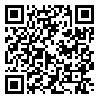BibTeX | RIS | EndNote | Medlars | ProCite | Reference Manager | RefWorks
Send citation to:
URL: http://qhts.modares.ac.ir/article-10-39303-en.html
2- Ph.D. Student of Arabic Language and Literature, Arak University
Conjunction style is one of the most widely used styles in the Arabic language, especially in the Holy Quran which prevents repetition by attaching a phrase into another phrase and results in brevity to the word. The first phrase in this style is called "subordinate word in conjunction" and the latter phrase "primary word in conjunction" which these two phrases are principally joined together. But sometimes the two phrases are separated by a phrase that belongs to both of them. Based on this research, this phenomenon has a semantic function and actually represents the difference between subordinate word in conjunction and primary word in conjunction to interact with the meaning of the common sentence (word occurrence + disjunctive phrase). With a descriptive-analytical method, the present study has investigated this phenomenon in the examples of the Holy Quran. The results indicate that the mentioned phenomenon as a semantic index phenomenon has not been recognized and interpreted by translators and has attempted to convey its meaning except in a few cases. In the meantime, that interpretive and communicative translations, which are more open-ended than literal translations, have had a better response to this phenomenon.
Received: 2019/12/25 | Accepted: 2020/02/25 | Published: 2020/03/13
| Rights and permissions | |
 |
This work is licensed under a Creative Commons Attribution-NonCommercial 4.0 International License. |








